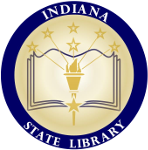501 Fletcher Ave., Calvin Fletcher Home and Wood Lawn
| Description: |
On slide mount: Calvin Fletcher Home + Wood Lawn, 501 Fletcher Ave. No Fletcher Place United Methodist Church [Previously Calvin Fletcher Home]501 Fletcher Avenue1872-1880Fletcher Place United Methodist was organized as the Depot and East Indianapolis Mission in 1849. The following year the name was changed to the Depot Charge. It was so named because, lacking a church building, the small congregation (former members of Roberts Park Church) met in an upper room in the freight depot of the Madison & Indianapolis Railway Company. In 1852 the congregation built a small brick chapel on S. New Jersey Street and named it Asbury Chapel in honor of the first Methodist Episcopal bishop ordained in the United States. This chapel served the congregations needs until 1872 when Calvin Fletcher and his sons donated the lots of Virginia and Fletcher Avenue, valued at $3,000, for the purpose of building a new church. This was once part of the Fletcher farm, Wood Lawn. In honor of this donation the church was named Fletcher Place Methodist Episcopal Church.The pastor at this time was Charles Tinsley (born 1832). He was the son of William Tinsley, the architect of Christ Church Cathedral. The family had emigrated from Ireland where William Tinsley had become known as a church architect for his designs for the Church of England. However, it was Charles Tinsley who was credited with the design of this church. He had briefly worked as an architect after attending school in Clonmel, Ireland. It is possible that his father had a hand in the design, however.The church has lost its spire so that the overall architectural design is somewhat diminished. It still remains though as an excellent example of the Gothic Revival Style. The stonework on the church was done by Gerhard Ittenbach who lived at 606 Fletcher Avenue. Many of the men who worked for his firm at 916 Harrison Street (now the site of I-65) also lived in the area. The metalwork on the church was done by Henry Laut who lived at 316 South College and had his shop at the corner of Fletcher and South College.Many other residents of the area were members of the church: Joseph and Emeline Earnshaw, William and Jane Glossbrenner, George W. Hill, Mrs. Jennie Whitsit, and George Sullivan. Some of these people are commemorated in the stained glass windows of the church added some time after 1916.This spirit of service to the neighborhood has continued into the twentieth century. In 1913 Josie Ragle, a deaconess, organized the first settlement house in a building at Pine and Shelby. In 1928 it was moved to 529 Fletcher Avenue. The Settlement provided dental clinics, prenatal and baby clinics, Sunday school and library facilities. As detailed in a 1928 newspaper article, many of the early recipients were Italian and later native-born Americans from the South. In 1930 the church started the first Goodwill Industries in the building (now demolished) which was the South Baptist Church. The church has continued its commitment to the community needs to the present day and offers a variety of programs and services in the church and other neighborhood buildings. single-family dwelling |
|---|---|
| Source: |
http://iuidigital.contentdm.oclc.org/cdm/ref/collection/HT/id/1344 |
| Collection: |
Indianapolis Historic Preservation Commission Image Collection |
| Rights: | http://rightsstatements.org/vocab/InC/1.0/ |
| Copyright: |
In Copyright |
| Geography: |
Indianapolis, Marion County, Indiana, United States, http://sws.geonames.org/4259418/, 39.76838, -86.15804 |
| Subjects: |
Architecture--Indiana--Indianapolis Built environment Historic districts Greek Revival Gothic Revival |
Further information on this record can be found at its source.




